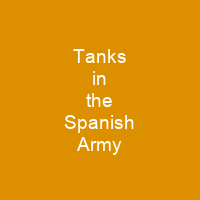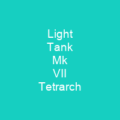Spain’s Tank Legacy: A Century of Armored Might
Imagine a timeline stretching over nine decades, where tanks have been an integral part of Spain’s military history, from the early days of World War I to the modern era of advanced armor technology. This journey is not just about machines; it’s a story of innovation, adaptation, and resilience.
The Early Days: Renault FTs and Beyond
Spain’s tank legacy began in 1919 when they received their first batch of French Renault FT light tanks. These early machines were not just weapons; they were the pioneers of armored warfare, taking part in the Rif War and even participating in history’s first amphibious landing with tanks at Alhucemas. The Spanish Army’s initial experience was a mix of success and challenges, as these tanks faced mechanical issues and coordination problems with infantry.
The Trubia Light Tank: A Homegrown Effort
Despite the early struggles, Spain didn’t give up on developing its own tank program. The Trubia light tank, developed in the 1920s, was a promising step forward. This tank featured a special turret and firing ports for small arms within the hull, showcasing the country’s ingenuity. However, production was slow, and only one prototype (Trubia A4) was armed before the project faced delays due to economic constraints.
The Spanish Civil War: A Test of Armored Might
During the Spanish Civil War, both sides received large quantities of tanks from foreign powers. The Republicans acquired Soviet T-26 and BT-5 light tanks, while the Nationalists relied on Italian CV-33s and German Panzer I light tanks. These conflicts proved inconclusive in terms of mechanized warfare’s effectiveness but led to Spain acquiring new tank designs like the Verdeja, which ultimately failed due to lack of resources.
The Leopard 2A4: Modernizing the Spanish Army
In 1994, Spain took a significant step forward by purchasing 108 Leopard 2A4s and building 219 Leopard 2Es. This modernization marked a new era for the Spanish Army, replacing old M60 Patton tanks with more advanced armor technology. The Leopard 2 series is renowned for its reliability and combat effectiveness, making it an ideal choice for Spain’s needs.
From Renault FTs to Leopard 2Es: A Century of Evolution
The journey from the early Renault FTs to the modern Leopard 2Es is a testament to Spain’s commitment to staying at the forefront of armored warfare. Each tank model represents not just an upgrade in technology but also a reflection of changing military strategies and geopolitical landscapes.
Conclusion: A Legacy of Adaptation
The history of tanks in the Spanish Army is one of adaptation, resilience, and continuous improvement. From the early days of Renault FTs to the modern Leopard 2Es, Spain has shown a remarkable ability to evolve with changing technologies and military needs. This legacy serves as an inspiration for future generations, reminding us that innovation and perseverance are key to maintaining a strong and effective military force.

You want to know more about Tanks in the Spanish Army?
This page is based on the article Tanks in the Spanish Army published in Wikipedia (retrieved on November 28, 2024) and was automatically summarized using artificial intelligence.







